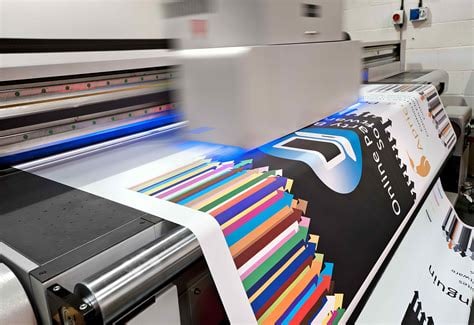Deciding whether to use digital or offset printing should depend on your project. There are many factors to consider before you choose to have your prints run digitally or offset. In order to make an educated decision, it’s important to understand each method, as well as the advantages and disadvantages of each.

Digital printing is the computerized reproduction method in which your chosen electronic file is printed directly to the printing surface by the machine. The most popular methods of digital printing include inkjet or laser printers that deposit pigment or toner onto a wide variety of substrates including paper, photo paper, canvas, and other materials. Most of us have the ability to do this right at home or in the office, without even thinking about how it’s actually working.
Offset printing, or lithography, takes your chosen image and burns that onto a plate. The image is then transferred, or offset, from the plate onto a rubber blanket, and then from there to the printing surface. The process is based on the repulsion of oil and water. The plate is wetted by water, where the image to be printed repels water, but picks up oil-based ink from ink rollers, while the non-printing area retains the water, but repels the ink. As if you couldn’t tell by the complexity of this process, offset printing is typically done at a print shop.
When determining which method is right for your project, consider the following factors.
- Quantity
Offset printing is the best for high-quantity runs. Offset has more upfront costs, so short runs will have a higher per-unit cost than seen in digital printing. Short runs are best kept to digital print methods. Much of the setup and maintenance seen in offset printing is eliminated with digital printing.
- Turnaround
Digital printing is much faster than offset, so if you need something done quickly, this should be your answer. The mechanical steps are eliminated in digital printing so there is no need to make films or plates—the image is printed directly to the chosen media.
Digital print methods offer accurate proofs as actual samples of the printed piece are provided, whereas offset proofs are rather expensive when accurate colors are desired.
- Size
Offset presses accommodate larger printed pieces, like posters or plan drawings. On the other hand, digitally printed pieces have size and paper stock constraints.
- Color
If the print piece requires the use of the Pantone Matching System, offset printing will provide an accurate match. With digital printing, the color that appears on the screen will be different from the color that is printed, but it is possible to get close to desired colors.
- Customization
For customized print pieces, digital printing is the way to go because offset printing doesn’t allow for it. Digital print methods can print variable data on each individual piece, such as names or addresses without stopping or slowing down the process.
How will you print your next project after considering all of these factors?
If you still have questions, or need additional guidance, the team at Avalon is ready to answer all of your questions and get your project printed for you, whether you choose digital or offset. Contact your local Avalon.
If you liked this blog you might also be interested in reading: Color Matching: Screen vs. Print




